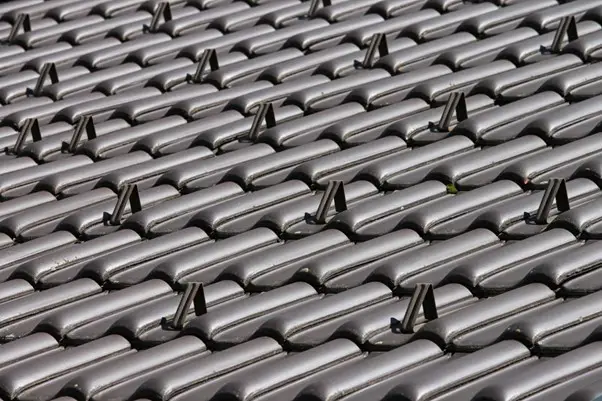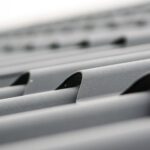Different types of materials for residential roofs pros and cons, USA property roofing contractor, Chicago building roofers maintenance
The Pros and Cons of Different Types of Materials for Residential Roofs
24 February 2024
When selecting the appropriate material for a residential roof, homeowners are often faced with a plethora of options, each with its own set of advantages and disadvantages. The choice of roofing material can influence not only the aesthetic appeal of a home but also its durability, maintenance requirements, and overall cost-effectiveness.
In this section, we’ll explore various roofing materials such as asphalt shingles, metal, clay tiles, wood shakes, and slate, providing insight into their respective pros and cons to assist homeowners in making informed decisions for their roofing needs.
Asphalt Shingles
Asphalt shingles are one of the most popular roofing materials in North America due to their cost-effectiveness and ease of installation. They come in a variety of colors and styles, allowing for a degree of customization to suit different architectural designs. In addition to their aesthetic versatility, asphalt shingles are relatively lightweight and can be easily repaired or replaced, making them a practical choice for many homeowners.
However, despite their popularity, asphalt shingles have a shorter lifespan than some other materials, typically lasting between 15 to 30 years. They are also more vulnerable to extreme weather conditions, which can lead to cracking, fading, and loss of granules over time. If you’re looking to research roofing materials In Chicago, for example, start by searching for contractors who have experience dealing with the harsh weather conditions prevalent in this area. Next, consider the pros and cons of other roofing materials to find the best fit for your home.
Metal Roofing
Metal roofing has gained recognition for its durability, longevity, and environmental sustainability. Its ability to reflect solar radiant heat can help reduce cooling costs during hot weather, and modern metal roofs can last 40 to 70 years, depending on the material. Available in steel, aluminum, and copper, metal roofs can be designed to fit a range of architectural styles, from traditional to contemporary.
On the flip side, the initial cost of a metal roof can be higher compared to other materials, which may be a deterrent for some homeowners seeking residential roofing services. Additionally, metal roofs can be noisier during rain or hailstorms unless proper insulation is employed. For those living in areas prone to hail, denting can be a concern, although certain metal roofing materials are designed to resist such impacts.
Clay Tiles
Renowned for their distinctive Mediterranean and Spanish architectural appeal, clay tiles are highly durable and offer excellent fire resistance. They can last 50 years or more with proper installation and maintenance. Clay tiles also have good insulating properties, which can help keep homes cooler in warmer climates and contribute to energy savings.
Clay tiles are relatively heavy, requiring additional roof framing and support, which can add to the overall roofing costs. They are also more brittle than other options and can break under heavy impact or during maintenance activities, like walking on the roof. Given these drawbacks, installation and repairs should be conducted by professionals experienced with this material.
Wood Shakes
Wood shakes offer a natural and rustic look that is particularly appealing on cottages, bungalows, and historically-inspired homes. They are made from natural wood, usually cedar, which provides a level of insulation superior to that of asphalt shingles. Wood shakes, when properly maintained, can last around 30 years and lend a charming, organic feel to a house.
Wood shakes can be more expensive and require more maintenance than some other roofing options. They need to be treated to be fire-resistant and can be susceptible to rot, mold, and insect infestation if not properly cared for. For those seeking a low-maintenance solution, wood shakes may not be the most suitable choice.
Slate Roofing
Slate roofing is a high-end option known for its natural beauty and longevity, with a lifespan that can exceed 100 years under the right conditions. It’s also fire-resistant and recyclable, making it an environmentally friendly choice. Because slate comes in a variety of colors and textures, homeowners can choose a unique look that enhances the curb appeal of their property.
The major downside to slate is its weight and cost. It is one of the heaviest roofing materials available, often requiring additional structural support, which increases installation complexity and expense. It is also among the most expensive roofing materials and requires specialized labor for installation and repairs, further adding to its overall cost. Despite these challenges, for those who can afford it, slate offers a timeless aesthetic and an unmatched lifespan.
In conclusion, the choice of roofing material involves careful consideration of longevity, aesthetic preference, resilience against local climates, maintenance requirements, and budget. Asphalt shingles may be the go-to for cost and ease, while metal roofing stands out for its durability and energy efficiency.
Clay tiles offer a traditional look and solid performance in hot climates, whereas wood shakes bring a touch of rustic beauty but demand diligent upkeep. Slate is unrivaled in lifespan and aesthetic appeal, albeit with significant cost and structural considerations. Homeowners should weigh these factors against their individual needs and the characteristics of their homes to determine the most appropriate roofing solution.
Comments on this guide to the different types of materials for residential roofs article are welcome.
Roofing Articles
Roofing Posts
Insulation Options for Your Roof

image source : pexels.com
How to make your roofing company a success
Property Design
Contemporary Architecture Design
Comments / photos for the Different types of materials for residential roofs advice guide page welcome






